by Walt Anderson
As Easter approaches, the abundant purveyors of consumption have been targeting buyers with all sorts of items, many of them associated with the Easter Bunny. How this mythical creature got associated with the Biblical Easter holiday seems like a stretch to me. And I hate to burst any balloons, but the Easter Bunny does not lay eggs! He also doesn’t lay down, as those fluffy feathers would be uncomfortably ticklish, but sometimes he does lie down. All right, I just had to put out my lie-lay pet peeve.
The domestic rabbit, often caricatured as the Easter Bunny, was derived from the European Rabbit, a different genus from our North American rabbits.
Australia didn’t originally have any rabbits, and they hate the introduced ones that became a horrible mammalian plague, so they celebrate with the Easter Bilby, a marsupial. Chocolate bilbies sold at Easter provide funds to fight the exotic rabbits and help conservation of the native bilbies.
As Spring is now here, bunnies will be multiplying like rabbits (their life history strategy is breed early and often), so let’s give them our attention this week.

There is hardly anything as charming and adorable as a domestic rabbit, which comes in about 150 breeds (https://en.wikipedia.org/wiki/Category:Rabbit_breeds) . Pet shops promote them as “clean, smart, cute, soft, and have a low carbon footprint.” Artificial selection has created types designed for laboratory research, meat, wool, fur, show competitions, and pets. Some of the more extreme breeds are the Dwarf, Flemish Giant, English Lop, Mini Rex, and Lionhead. Inbreeding has typically reduced brain size relative to body size, making them even more hare-brained than the wild ones.
●●●
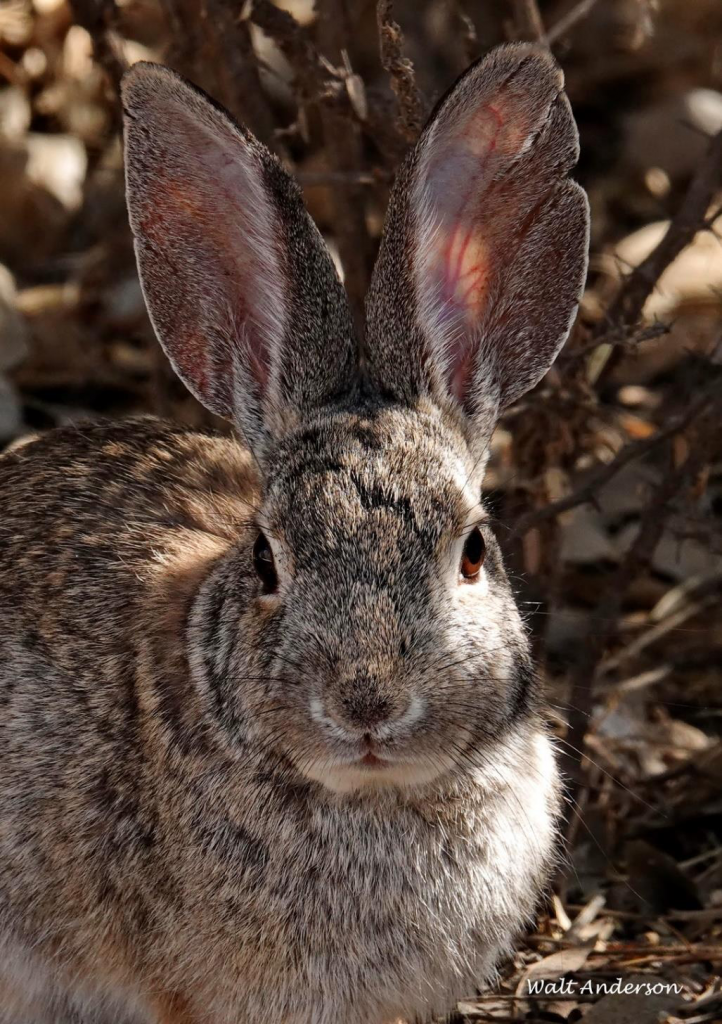
Wild rabbits are grizzled, cryptically colored as one would expect a vulnerable prey animal to be. In Arizona, there are three species: Desert (almost the entire state at lower elevations), Eastern (mountains of the Mogollon highlands from Kingman to the Sky Islands of SE Arizona), and the Nuttall’s (even higher elevations on the Kaibab Plateau, Chuskas, and White Mountains). The former two can be next-door neighbors in the Prescott Area, Buenos Aires National Wildlife Refuge, and in parts of the Sky Islands.
The highly vascularized ears help dissipate heat and are longer in desert animals than mountain dwellers. Even more extreme is the contrast between the stubby ears of the Snowshoe Hare and the massive flappers of a jackrabbit!
●●●
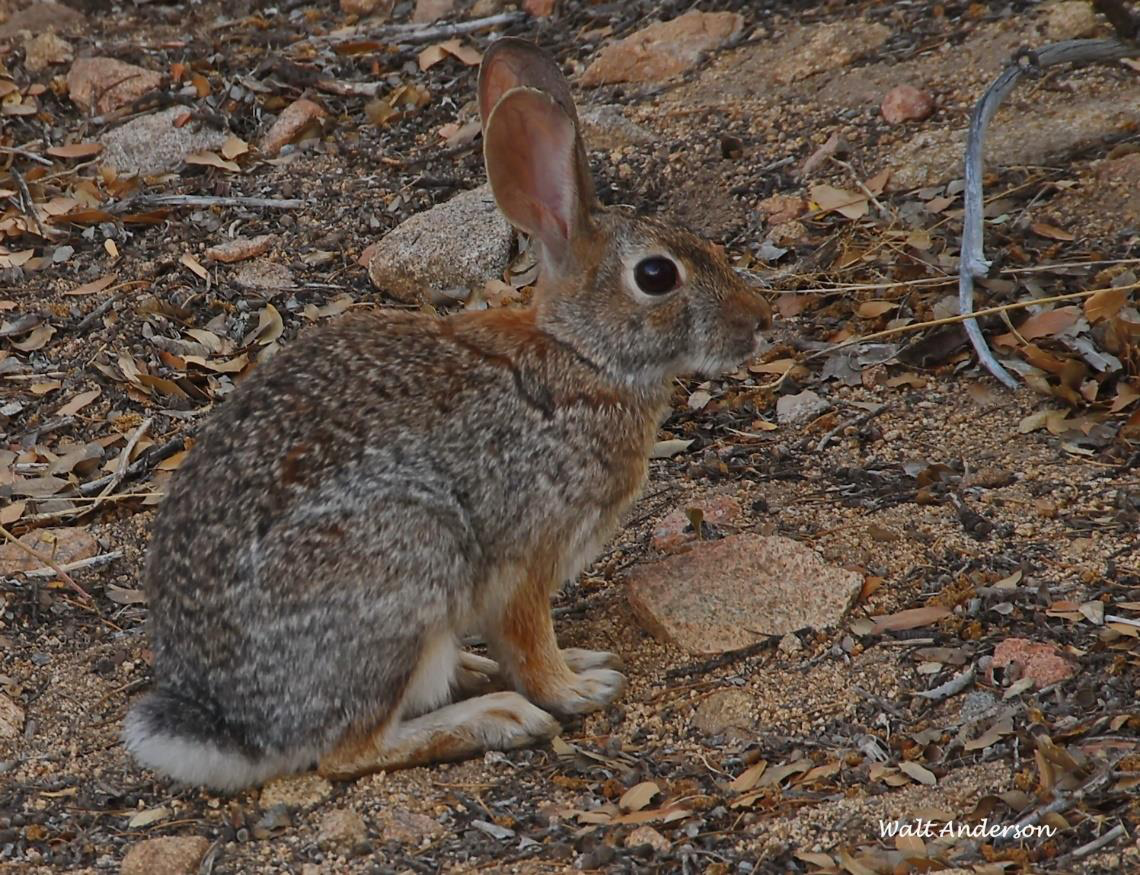
The Eastern Cottontail can usually be recognized by its bright cinnamon, orange, or chestnut nape (back of neck), its ears shorter than its head length, and generally more color contrast than its Desert counterpart.
●●●
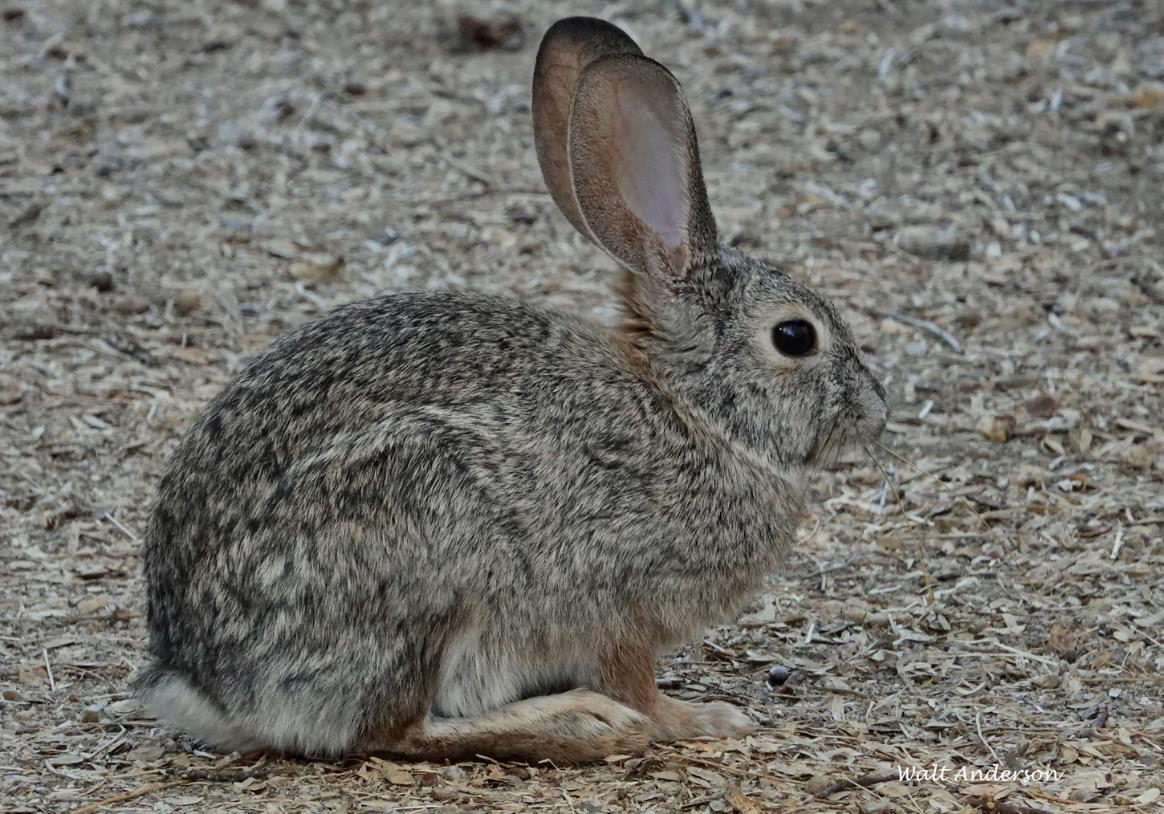
The Desert Cottontail is paler, more subdued, with a tan or fawn nape and ears longer than head length. Of course, younger animals may be harder to differentiate, but range and habitat are often good clues.
●●●

Rabbits tend to be crepuscular to nocturnal, especially active at dawn and dusk, hiding out and avoiding the mid-day heat. Their night vision is excellent, as they have a reflective tapetum on the retina that helps to amplify light. We see that as brilliant red eyeshine if we shine a light at them at night. Rabbits are vegetarians, consuming grasses; forbs like clover or dandelions; shrubs like willows, blackberries, and wild roses; and even cacti in the deserts (providing some of the moisture they may need). The high cellulose levels of much plant food are not easily digestible, and the rabbit is too small to have an intestine long enough to process their food thoroughly, so they have an interesting way of increasing digestive efficiency: coprophagy. They do this by eating the soft, green pellets that first have moved through the system, bypassing the stomach acids by moving them quickly to the intestines for further digestion. Then they defecate hard, fibrous pellets, with most of the nutrients now removed.
●●●
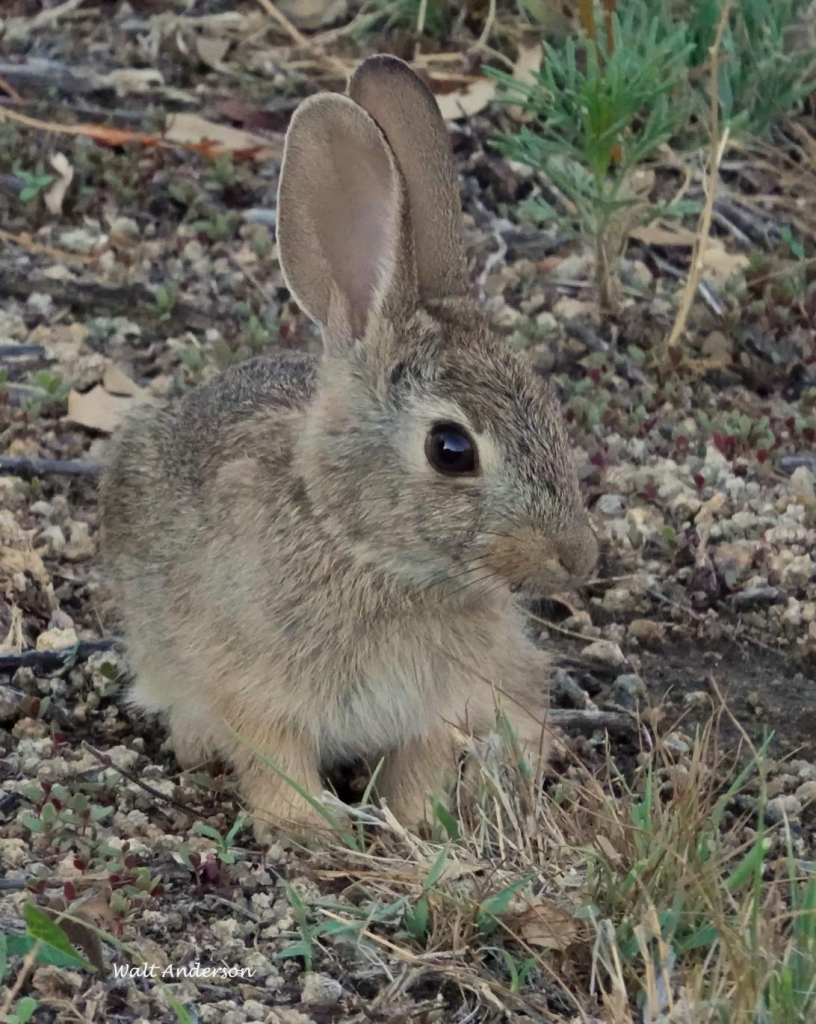
Unlike hares, whose young are precocial and on the run from the very start, rabbit kits are born blind, deaf, and pretty helpless in a cozy nest lined with the mother’s fur. The mother nurses the babies only once or twice a day, covering them carefully when she is away from the nest. They grow quickly and are weaned and independent in a mere three weeks or so. Then they are on their own, as the mother has new mouths to feed, having mated right after the young are born. Rabbits are incredibly prolific, having 3-7 broods of 3-5 young per year and starting to breed at the age of six months. Some females have been noted to have up to 35 young in a year!
●●●
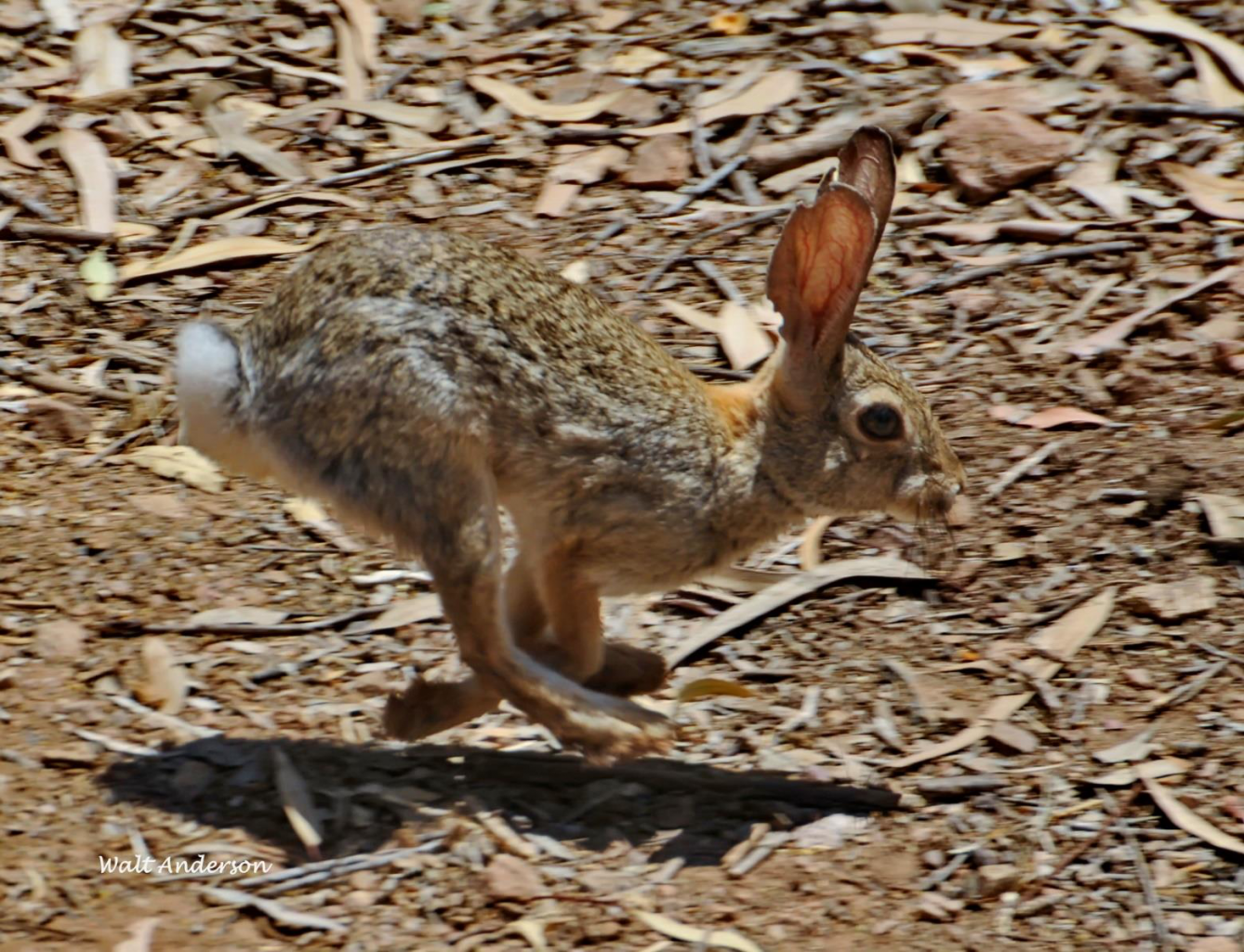
But obviously cottontails can’t breed at an exponential rate without a governor to limit their populations, and mortality is incredibly high. Few rabbits live to see their first birthday, and it’s a rare senior bunny that reaches 3 years. More rabbits are taken by hunters than are any other wildlife species. Cars and domestic dogs and cats take their share, especially of young bunnies. And there is a host of predators that love bunny on the plate: hawks, owls, foxes, coyotes, bobcats, snakes, and many more. Plus many have parasites and diseases. Rabbits can sprint at 15 mph and leap 10-12 feet in a single bound, and they zigzag to make things tougher. They flash their white tails to get the pursuer to focus on that instead of the body; the powder puff has a function. Then they suddenly freeze, hiding the cotton tail, and they seem to disappear. But it’s not always enough, and rabbit is often someone’s main course.
●●●
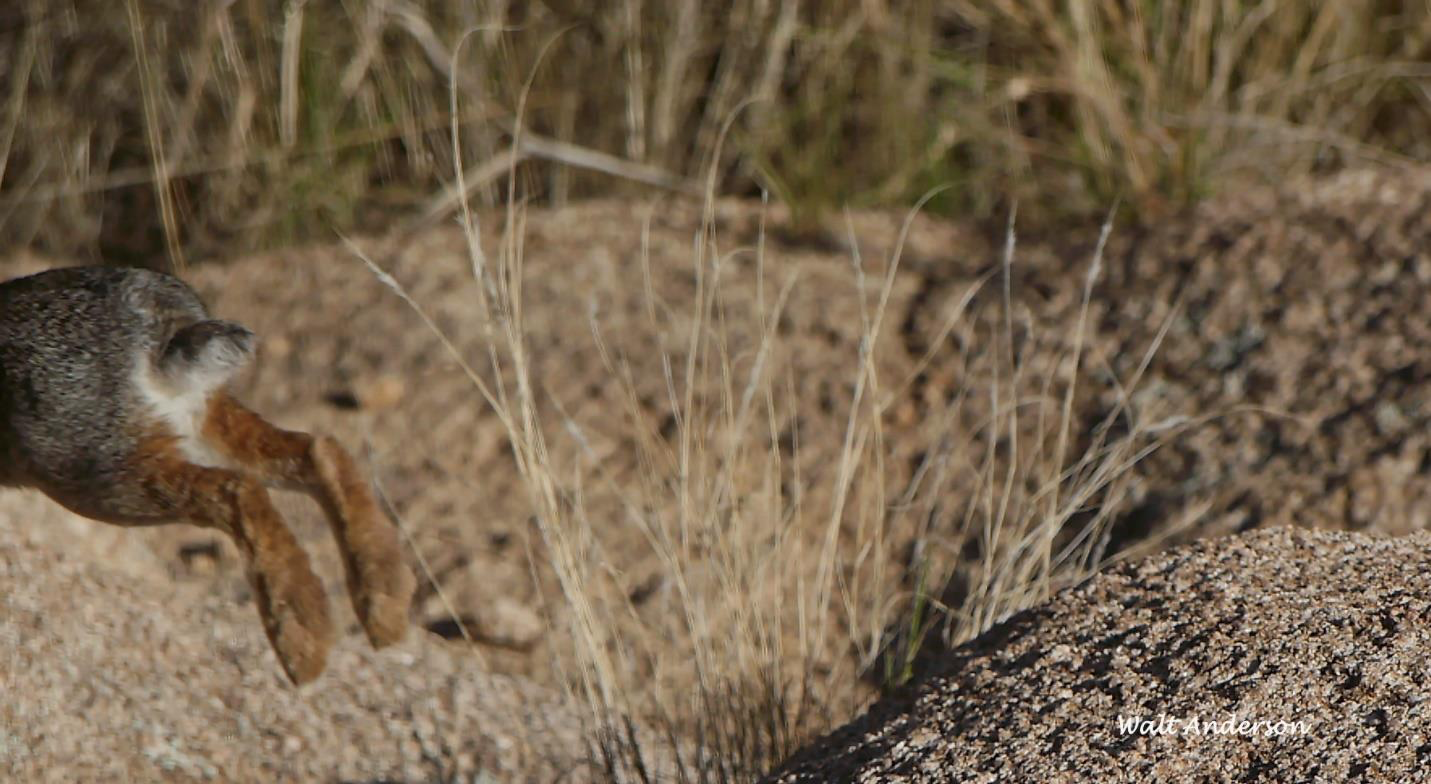
Hare today, gone tomorrow.
●●●
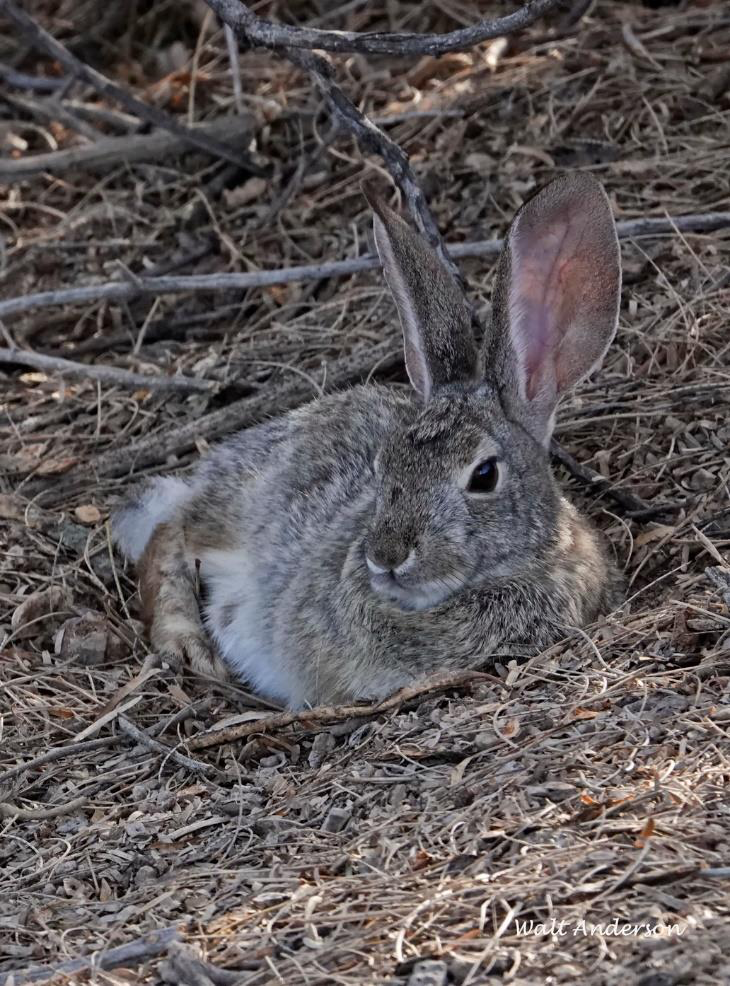
But life is not all fear and adrenalin. Rabbits know how to rest too, usually in a little depression called a “form.” But the rabbit is alert; it doesn’t lie down on the job. And believe me, it never lays down!
